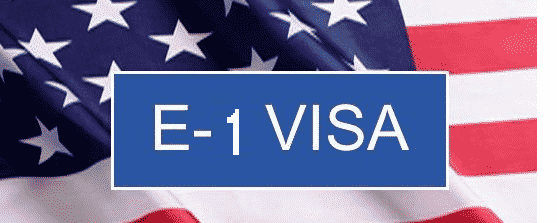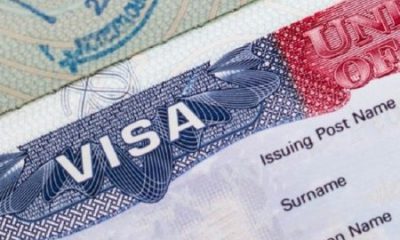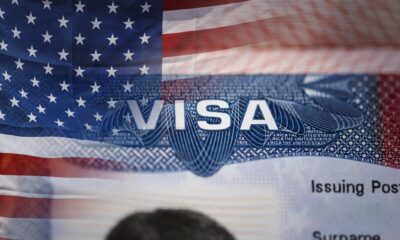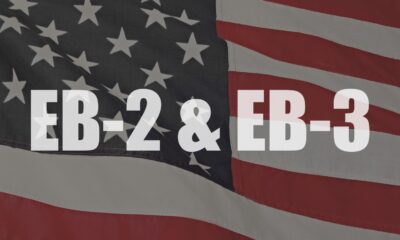Visa
US E1 Visa: Application, Countries, Requirements & Processing Time

The Treaty Trader Visa (E1) is a US non-immigrant visa for US traders. The US must trade with an E1 visa country with which it has a trade and investment treaty.
A sole trader or company with trade representatives can continue trading in the US with an E1 visa. The trade can be in transportation, communication, banking, advertising, management, etc. No industry restrictions apply to trading.
The exchange for an E1 visa must be considerable. Substantial trade is massive, ongoing goods or service trading. Due to industry differences, the regulations do not set a minimum trading requirement for an E1 visa.
E1 visa holders can work in the US for their commercial partner but cannot change jobs without losing their visa. E1 visa holders can take a few university courses, but they cannot study full-time because they cannot work or trade.
What Are the E1 Treaty Countries?
Here are the E1 Treaty Countries
The 1995 Treaty of Amity, Economic Relations and Consular Rights with Iran has been terminated on January 24th 2020. Therefore citizens of Iran are not eligible for the E1 visa anymore.
Do I Qualify for the E1 Visa?
To be eligible for the E1 visa, there are certain conditions that you must meet. The criteria for this type of visa are as follows:
- You must be involved in international trade.
- You must be from a country that has a trade treaty with the US.
- If you work for a company, at least 50% of it must be owned by people who are citizens of a trade treaty country.
- You must have a senior position such as a supervisor, manager, or executive.
- You must be the dependent (spouse or unmarried child under 21 years old) of someone who fulfills the above criteria.
Meeting the requirements is key to being eligible for the E1 visa. If you do not abide by these rules, then your application for the E1 visa will be denied.
How to Apply for the E1 Visa?
You can apply for an E1 visa from two places, depending on your situation:
- From within the US through USCIS
- From outside the US through a US Embassy
Within the US
If you will directly trade internationally, you must file Form I-129, Petition for a Nonimmigrant Worker, from within the US. The company must file Form I-129 if you will supervise, manage, or executive for an international trader.
You must also show nationality, trading relationship, and intent to return home with filing fees and other documents. USCIS will then process and respond to your request. USCIS will provide Form I-797, Approval Notice, to you or your employer if your request is approved.
Outside the US
If you are outside of the US, you must apply through a US Embassy in your home country. Applying from outside the US is a lengthier procedure. It involves the following steps:
File Form DS-160, Nonimmigrant Visa Application
Fill in the necessary information and at the end, you will get a confirmation page which you will need later on for your documentation.
Pay the application fee
The fee for the E1 visa is $315. You might be asked to pay additional fees such as visa issuance fees or reciprocity fees based on the country you come from.
Schedule your visa interview
You should schedule your interview as soon as possible to avoid excessive waits caused by the US Embassy’s heavy workload. All visa applicants over the age of 13 and under the age of 80 must meet with a US Embassy officer. When you schedule your interview, you will be handed a visa appointment letter, which you must bring with you.
Gather the documents
Gather a file of documents to bring with you on the interview:
- Your valid passport.
- If you are an employee of a company, submit documents which prove the nationality of the company and that it belongs to a treaty trade country.
- Have one photograph according to the US Visa Photo Requirements and submit it with the DS-160 form.
- Form DS-160 confirmation page.
- Filled Form DS-156E, Treaty or Trader Investor Application.
- Receipts that prove you have paid the necessary fees.
- Visa appointment letter.
- Letter from employer describing your position and how you are an essential employee to international trade.
- Letters or documents which prove you or the company you work for have substantial trade with the US.
- Evidence of your intentions to return to your home countries such as property deeds, apartment lease, or other documents.
Attend the scheduled interview
During the interview, a US Embassy official will question you about your character and the purpose of your visit to the US. The official will also inquire as to whether you intend to return to your own country. If they assume that you want to stay in the United States permanently, your visa status may be jeopardized.
How long does it take to process the E1 visa?
The processing period for an E1 visa is determined by the caseload of the US Embassy or USCIS if you applied from within the US. However, the processing period is projected to be between two and four weeks from the moment you file your application. After the processing period has ended, you will be notified whether you have been granted or rejected the visa.
How long is the E1 visa valid?
The visa will be limited if the US Embassy or USCIS approves you. E1 visas are initially good for 2 years. You can trade internationally in the US for two years. After that, you can stay or return home.
If you meet the E1 visa requirements and are an international trader , you can leave the US and return through a Port of Entry. E1 visas are sometimes automatically renewed for 2 years.
Most often, you must apply for a visa extension. The US grants limitless renewals for E1 visa holders who fit the conditions and want to return home. Forms I-129 and I-539, Application to Extend or Change Status, are needed to request an extension.
Your passport, Form I-94, Form I-797, US tax documents, and proof that your presence in the US is necessary to continue trading must also be included.
Can I apply for a Green Card with an E1 visa?
Going from an E1 visa to a Green Card is challenging because you must constantly justify your purpose to return home once your visa expires and your job is done. However, it is conceivable. Finding a job and an employer ready to sponsor your stay is easy. Change your status to an H-1B visa and apply for the Green Card.
If your family has permanent residence in the US, you can join them. Filing as an Alien of Extraordinary Ability or EB-1 person or filing a National Interest Waiver (NIW) with advanced education and expertise and proof that your job would help the US are more challenging ways to gain permanent residency.
Can I bring my dependents with an E1 visa?
You can bring your dependents to the US with an E1 visa. Spouses and unmarried children under 21 are dependents. The dependents can apply for the E1 visa with the primary E1 individual or afterwards.
They must prove a relationship with the primary E1 visa holder to petition as dependents. This covers marriage and birth certificates. The US only recognizes one spouse, hence only one marriage certificate is legitimate. However, same-sex couples can apply.
E1 visa-holding dependents can work and study in the US. An Employment Authorization Document is needed for E1 dependents to work. File Form I-765, Application for Employment Authorization. After this document is approved, dependents can work part- or full-time.
Form I-539, Application to prolong or Change Status, allows dependents to extend their stay if the principal E1 visa holder does. The dependents will likewise receive a Green Card if the principal E1 visa holder does.






















